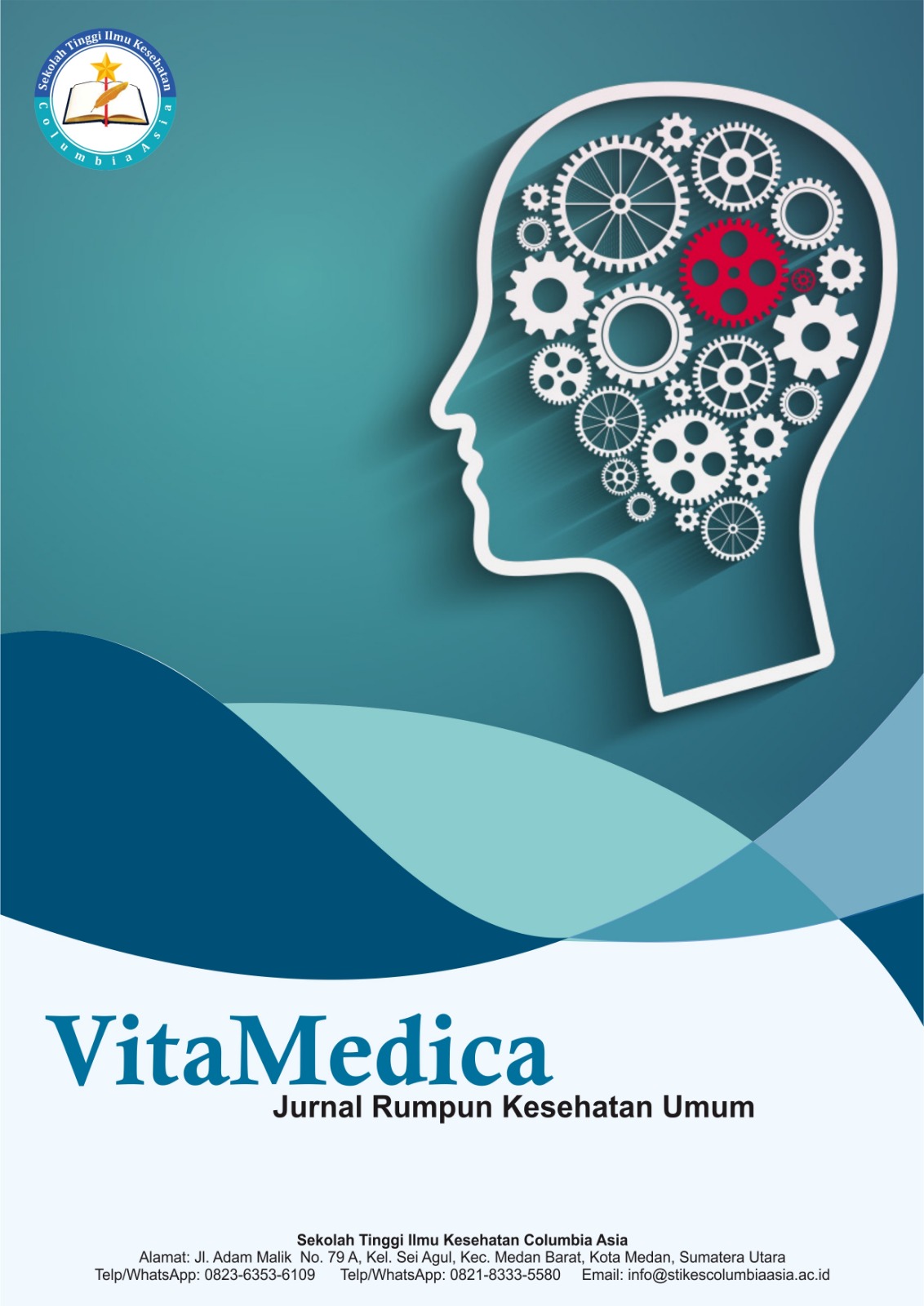Tinjauan Penerapan Rekam Medis Elektronik di Pendaftaran Rawat Jalan RSUD Balaraja
DOI:
https://doi.org/10.62027/vitamedica.v3i3.421Keywords:
Electronic Medical Records, OutpatientAbstract
The implementation of Electronic Medical Records (EMR) is a digitalization innovation in medical data storage which aims to increase the efficiency of health services. At Balaraja Regional Hospital, the EMR system is implemented using the Hospital Information Management application (MIRSA). This study aims to evaluate the implementation of EMR in outpatient registration, identify the obstacles faced, and provide recommendations for improvement. The scope of the research includes an outpatient registration system that uses EMR. Descriptive research method with qualitative analysis, by means of observation and interviews with the main informant, the head of medical records and other informants, registration officers. The research results show that the implementation of EMR has increased service efficiency by speeding up the registration process and reducing manual recording errors. However, analysis using the Human, Organization, Technology, Net-Benefit (HOT-Fit) method revealed obstacles such as technological aspects and organizational support, as well as slow network constraints. The conclusion of this research is that although EMR provides benefits in increasing service efficiency, improvements are still needed in technological and management aspects. It is recommended that Balaraja Regional Hospital develop special SOPs for MIRSA, improve system maintenance, and provide regular training officers to improve the quality of health services.
References
Avianti, N., Husni, M. A. R., Ferfdianto, A., & Nugraha, R. I. (2023). Tinjauan kesiapan penerapan rekam medis elektronik di RSU Lukas Bangkalan program studi DIII Perekam dan Informasi Kesehatan STIKES Ngudia Husada Madura 2023.
Cahyani, L. N. (2022). Tinjauan penerapan rekam medis elektronik di unit pendaftaran.
Febrianti, E. C., Nurmawati, I., & Muflihatin, I. (2020). Evaluasi rekam medis elektronik di tempat pendaftaran pasien gawat darurat dan rawat inap RSUD K.R.M.T Wongsonegoro Kota Semarang. J-REMI: Jurnal Rekam Medik dan Informasi Kesehatan, 1(4), 537–544.
Franki, & Sari, I. (2022). Evaluasi rekam medis elektronik dengan metode HOT-Fit di Klinik Saraf RS Mitra Plumbon. Jurnal Penelitian Kesehatan Suara Forikes, 13, 43–51.
Hidayatuloh, C., & Mulyanti, D. (2023). Analisis SIMRS terhadap peningkatan pelayanan kesehatan di era digital dalam mendukung implementasi rekam medis elektronik. Jurnal Ilmu Kedokteran dan Kesehatan Indonesia, 3(2), 65–71.
Kemenkes RI. (2016). Penyelenggaraan pelayanan rawat jalan di rumah sakit (Vol. 4, Agustus, pp. 30–59).
Kemenkes RI. (2020). Peraturan Menteri Kesehatan Nomor 3 Tahun 2020 tentang Klasifikasi dan Perizinan Rumah Sakit (No. 3, pp. 1–80).
Kemenkes RI. (2022a). Peraturan Menteri Kesehatan No. HK.01.07 Tahun 2022 tentang Pedoman Variabel dan Meta Data pada Penyelenggaraan Rekam Medis Elektronik (No. 2).
Kemenkes RI. (2022b). Peraturan Menteri Kesehatan No. 24 Tahun 2022 tentang Rekam Medis (No. 1).
Syarif, H., Prasetya, D. A., Purnomo, D. A., & Rachmawati, I. K. (2022). HOT-Fit model pengembangan sistem informasi.
Widjaja, L. (2014). Proses pendaftaran dan indeks.
Downloads
Published
How to Cite
Issue
Section
License
Copyright (c) 2025 VitaMedica : Jurnal Rumpun Kesehatan Umum

This work is licensed under a Creative Commons Attribution-ShareAlike 4.0 International License.







